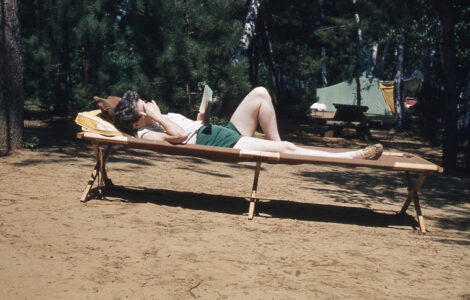Deer ticks — the bugs that bite
A few years ago, I was in the Champlain Valley helping to clear a trail. Just to let you know even with huge signs warning me to be careful of ticks, I did everything wrong. I walked through tall grassy areas with dark pants, shirt, and socks. I didn’t check my clothes before getting in the car and I didn’t notice I’d been bitten until I saw the classic “bullseye” bite mark a week later. You don’t have to reprimand me, I’m hard enough on myself. I learned my lesson the hard way.
Just so you don’t have to learn my lesson, I thought I’d share some fun facts about ticks that I wasn’t aware of.
1). Ticks don’t jump. That is correct. Ticks do this survivalist act called questing. They grasp a piece of grass with their hind “legs” and reach out, waiting to climb aboard their next host. It allows the tick to act quickly If a host brushes by so it quickly takes advantage of the situation.
2). There are four stages of the deer or black-legged tick growth: egg, larval, nymph, and adult. The egg and larval stages are the only ones that don’t pose a threat of infecting humans with Lyme Disease. The tick lays eggs in spring and the larvae hatch in summer. The larvae will attach to a host, but the host has to be already infected in order to transmit the disease. So, in other words, ticks are not born with Lyme; they receive it from an infected host such as white-footed mice, squirrels, chipmunks, raccoons. The larvae are the size of a period at the end of a sentence. The engorged larvae will fall off its host and molt into nymphs in autumn.
3). The nymph is the most common stage for contracting Lyme. In the spring, the nymph becomes active again and looking for its next host. A nymph is the size of a poppy seed and can attach to humans, but due to its size, may go unnoticed. If the nymph previously fed on an infected host as a larva, then it can now infect someone/thing with the bacterial infection.
4). If you or your children plan on being in a yard or trail that is frequented by wild animals such as deer, squirrels, wear light-colored clothing. You will have a better chance of seeing the tick. Tuck your pants into your socks. Looking smart is the new cool. Wear long sleeves and use a bug repellent on clothing and any exposed skin. Check yourself and your mates periodically for ticks. Just like we remember to put on sunblock or bug repellent, make tick checks a habit for everyone.
5). The classic bullseye tick bite is not a guarantee. Strange to say, I was actually fortunate to get the circular rash tick bite indicator. It doesn’t show up for everyone that has been bitten. After noticing the mark on my leg, I went to the emergency room and was asked by the attending doctor if he could show his staff the mark. It was there I learned that people can be bitten and not show signs of infection until much later with devastating effects.
6). If you find that you are bitten, but find the tick with 24 hours your chance of infection is minimal. That is why tick checks are so important. The tick doesn’t transfer the disease immediately. The tick cuts into its host to eat inserting a feeding tube and commences to fill up on its blood meal. As it feeds, small amounts of saliva and regurgitated blood can be transmitted back into the host. If infected, that regurgitation enters the host’s bloodstream further spreading the bacteria. Yuck.
7). If you’ve been bitten, seek help from a medical professional. I was in great hands at Adirondack Medical Center. The staff was patient will all my questions and made me feel at ease.
8). Prevention is the key. Clean up leaf-litter in the yard and be careful around areas of high moisture. Stick to the sunny, dry places. Ticks rapidly lose moisture so won’t as likely be found in a sunny spot. After hiking in a high-risk area, put clothes in a dryer for five minutes to kill any of those hitchhikers.
Please don’t let the threat of Lyme or other tick-related illnesses prevent you from having plenty of outdoor summer entertainment. Just like all the other risks we take on a daily basis, it’s just a matter of being careful and being aware. Have fun!
Diane Chase is the author of the “Adirondack Family Activities” guidebook series, “Adirondack Family Time: Your Four-Season Guide to Over 300 Activities.” For more family-friendly activities go to www.adirondackfamilytime.com.


